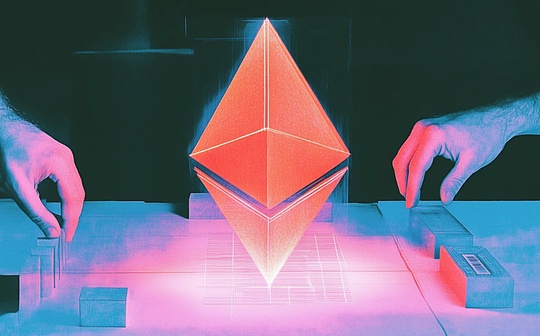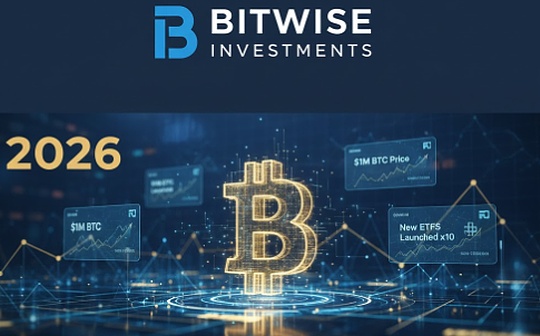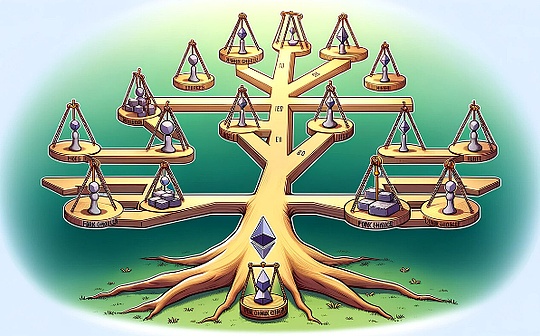
Written by: Tia, Techub News
The process of solving the MEV problem is actually re-establishing the allocation rules for block space.I believe everyone is no longer unfamiliar with MEV, but if you want to know what some Ethereum MEV governance proposals are talking about, you may still need some background information to add. Therefore, this article sorts out a series of governance MEVs since Ethereum switched to PoSThe proposals such as PBS, ePBS, and PEPC are hoped to provide you with some background information.
PBS (Proposer Builder Seperatioin)
Before the Ethereum merger, the way to solve MEV was to use MEV-Geth developed using Flashbots, a modified go-ethereum client.Its core philosophy is to allow miners to focus on their jobs – mining rather than participating in the MEV competition, thereby avoiding potential restructuring issues that may arise.The mechanism of MEV-Geth is very simple and is a market-oriented solution, that is, when miners package blocks, they can choose according to the size of the searcher’s profit to submit the bundle.Through this clever market-oriented mechanism, all parties have formed certain constraints while obtaining benefits.Although the searcher needs to share part of the profits to miners, it is exchanged for safer protection from being stolen by miners.When the searcher is encircled, the main source of profit, miners will passively start using MEV-Geth and are further bound by the MEV-Geth mechanism.MEV-Geth maintains a miner’s whitelist, and only miners on the whitelist can receive the searcher’s bundle.By placing a credit constraint on miners, miners who are about to steal the searcher’s results will be removed from the whitelist, which can prevent miners from snatching the searcher’s MEV profits.
However, after the merger, since the blocking method becomes randomly selected as a proposer from the validator to propose blocks, it is not feasible to prevent the proposer from snatching the MEV.
The possible solution is to make the block content invisible to the validator.Further improvement along this idea is PBS (Proposer Builder Seperatioin, proposed to build separation).PBS further deconstructs the responsibilities of being a validator of the proposer into block construction and block proposals, and outsources complex construction rights that may be involved in the competition for interests to builder. In this way, the work of the proposer becomes very simple, just toChoose based on the profit size of the builder commits the block to propose the block.
Initially, Ethereum wanted to embed PBS into the protocol when merged, but due to the potential complexity, this process was put on hold first, thus giving MEV-Boost the opportunity to intervene in PBS.Currently, PBS is implemented through MEV-Boost developed by Flashbots.In addition to builder and proposer, there is another very important role – relay.The builder does not send the block directly to the proposer, but relays through the third role.
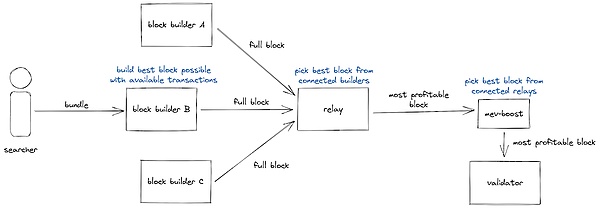
Because there are some other problems that need to be solved, such as how to ensure that the builder will pay the fee to the proposer, and will disclose the block content to the proposer at the end, so as to avoid the proposer from being confiscated for submitting blank blocks; such as how to ensure that the builder submits the areaBlocks will definitely be included in the beacon chain, etc.These issues that protect the rights and interests of builders and proposers are mainly achieved through relay.
The builder will send the block to relay, and then relay sorts the blocks according to the profits that can be obtained from each block, and then sends the block header with the highest profit to the proposer to ensure that the proposer is invisible to the block content..Relay will disclose the full block to the proposer only after the proposer commits to the block proposal (signing the block header).The cost of the builder to the proposer also needs to be completed with the help of relay.The transaction paid to the proposer is included in the submitted block, but since the proposer cannot see the block content, relay still needs to help confirm in advance.

In protocol & out protocol
In order to participate in the market for MEV-Boost construction, validators need to run a third-party non-Ethereum MEV-Boost program while running the Ethereum consensus client and the execution client.This is the magic of PBS currently running, which allows third parties outside the protocol to participate in the rule design of Ethereum consensus formation.From the perspective of ownership, this is incredible.
This also triggered thinking about the “credibility” of the protocol mechanism, how credibility is strengthened and how it is eroded through other mechanisms.MEV-Boost is a good example because there may be cases where external protocols will make changes to existing mechanisms.When the protocol itself starts to have lag, this change may begin to sprout from the outside. The germination of external mechanisms must meet the current market demand, but whether the external mechanism is credible and whether it has been rigorously designed to prevent potential problems from arise.Even external mechanisms may break the protocol, which is unknown.
Centralized Relay
The most criticized thing about MEV-Boost is its centralized relay market.But this setup introduces trust issues.builder needs to believe that relay will not steal their MEV.The proposer must also believe that the block header they received and signed from relay is valid.However, despite its crucial role, the relay does not have any financial incentives and running relay requires a considerable expense.Last year, 11 relays supported the Ethereum network, but today, only 9 relays are still providing services.
It is worth noting that relay does not require access. Relays like Eden only relay their own builder.There are also relays such as bloXroute that claim to filter out transactions related to snatch and sandwich attacks.To a certain extent, relay also has certain rules-making power.

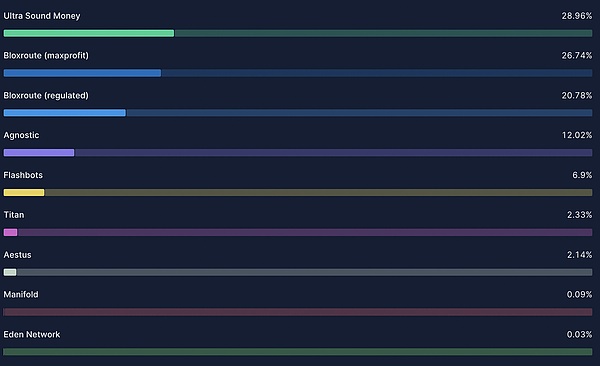
Data comes from Rated Network
And, from the Liveness perspective, due to the existence of relay, there is no atomic level confirmation between the builder and the proposer.If the proposer signs a commitment to the block header and the builder also provides the payload content, but cannot submit the content in time due to relay errors (either malicious or non-malicious), the builder and proposer will bear the losses.
ePBS: Encapsulate PBS into Ethereum
Whether it is to solve the problem of relay centralization or to move the outside of the protocol to the protocol, encapsulating PBS into Ethereum’s ePBS seems to be a must-have option.At present, ePBS is no longer a proposal under discussion, and Ethereum EIP editors have assigned it a number – EIP-7732.
ePBS provides proposers and builders with a trustless infrastructure for them to outsource block build rights.The role of the builder that was originally outside the protocol was included in the protocol, that is, the role of a builder is split out among the validators, and the builder as the validator also needs to complete the stake in Ethereum.Since the original responsibilities of the consensus layer proposal were split, the consensus layer needs to be changed to complete ePBS.Among them, the builder is responsible for building the execution payload (the final list of transactions to be executed in the block).The responsibility of the proposer is to propose beacon blocks.The specific process is as follows:
-
After knowing that you are selected as a Proposer, create and broadcast the Inclusion List (IL, the transaction that must be included in that slot).
-
The builders will include the block hash of the execution payload and the promise to pay the fee to the proposer.SignedExecutionPayloadHeader”Send to the proposer (execution payload needs to meet IL)
-
The proposer sent from the buildersSignedExecutionPayloadHeader” Choose one to include it (usually the one that pays the highest price to the proposer).and broadcast the proposed beacon block “SignedBeaconBlock”.
-
Witnesses perform their witness duties
-
Aggregators submit attestation aggregates; at the same time, builder broadcast execution payload
-
PTC (Payload Timelines Committee, in each slot, 512 validators will be selected as PTC members) check whether the builder reveals the execution payload in time and broadcasts the results.
ePBS has also experienced many discussions from the time it was proposed to the final acquisition of the EIP number.Initially, PBS was proposed by Vitalik in June 2019, and four months later, the Two-slot PBS was launched. It was not until July 2019 that the idea of PTC was officiallypropose.
PEPC (Protocol-Enforced Proposer Commitments)
Of course, some people disagree with ePBS and hope to use other solutions instead.That’s it for PEPC.ePBS embeds a certain rule into the protocol, but here in PEPC, the proposer sells programmable block construction rights.
PEPC was proposed by barnabe in October 2022.barnabe believes that if we want to put the PBS mechanism into the protocol, we should consider implementing a common mechanism for trusted signal transmission, rather than implementing a specific trusted signal (such as if I were asked to build a block).I will return it to you xx ETH).
Just like the name of PEPC (Protocol-Enforced Proposer Commitments), some mechanisms that ensure the rights and interests of builders and proposers are completed through the commits submitted by the proposer within the protocol. These commits can be verified on the chain, mainly by the operation code.”BEACONROOT” is implemented.This is a more general mechanism. The commit can outsource all the block construction rights, or only outsource a part of the block, that is, the proposer sells programmable block construction rights.
summary
The above is a brief introduction to PBS, ePBS, and PEPC.From the perspective of protocol design, not only does it need to design a market mechanism for reallocating MEVs, but it also needs to consider how to make validators more decentralized and how to improve censor resistance.Moreover, there are many trade-offs in the design of the protocol.Take ePBS that has obtained the EIP number as an example. Although the design of ePBS solves the problem of centralized relay, does the key role of relay as a third party outside the protocol really have only negative impacts?Judging from the payment mechanism of builder, using relay is more advantageous than the ePBS mechanism, because ePBS is a prepaid mechanism. If the builder packages a very high-profit block, it will not be possible to provide high amounts to the proposer under the prepaid mechanism.Reward.


